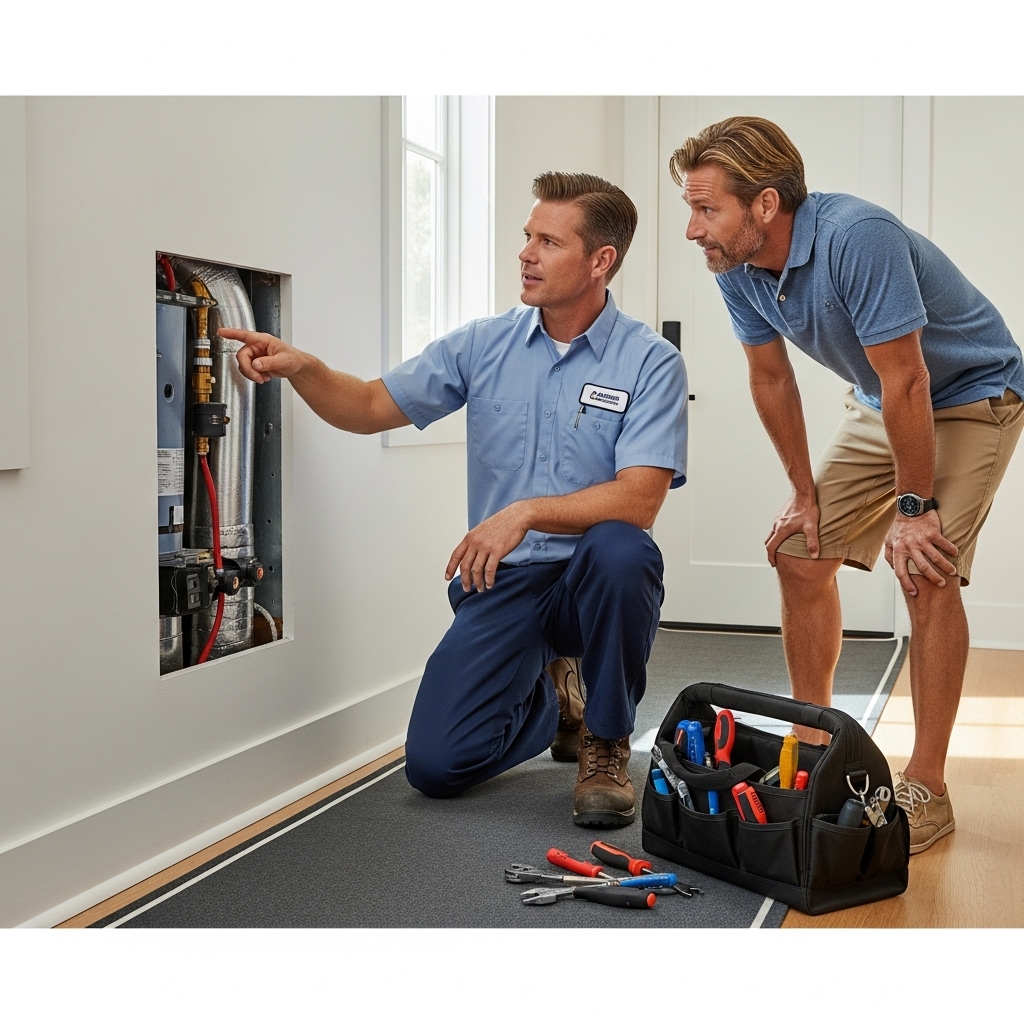Malibu’s coastal beauty comes with a unique set of challenges for air conditioning systems: salt air, fog, hillside dust, and the occasional heat surge that demands peak performance. When cooling falters, a clear plan helps you act quickly, work effectively with a technician, and prevent repeat issues. Use this step-by-step guide to organize your approach from the moment you notice a problem through post-repair maintenance. If you’re also comparing professional options and want to understand the process of air conditioning repair, the steps below will help you make smart decisions with confidence.
Repair is best seen as a sequence: stabilize, diagnose, resolve, and prevent. Each phase has actions you can take to support a fast, reliable outcome. Malibu’s environment simply means you’ll pay extra attention to airflow, coils, and drains—areas that often suffer first near the coast.
Step 1: Stabilize Your Home
When cooling drops off, minimize heat gain and protect against potential water damage. Small actions make a big difference while you arrange service.
- Close blinds, draw curtains, and reduce interior heat sources
- Use fans for circulation and move activities to cooler rooms
- Turn the system off if you notice burning smells, grinding, or water around the air handler
Step 2: Quick Checks You Can Perform Safely
Simple checks can restore performance or at least clarify the issue for your technician. Never open sealed panels or handle refrigerant components.
- Verify thermostat settings and replace batteries if needed
- Inspect the air filter and replace if loaded or damp
- Ensure supply vents are open and return paths are unobstructed
- Check for tripped breakers and reset once only if safe
- Clear debris and vegetation from around the outdoor unit
Step 3: Document Symptoms and Patterns
Write down what you experience and when it happens. Videos of noises, short cycling, or water drips are invaluable. Note whether issues appear after foggy mornings, windy afternoons, or during evening heat spikes—Malibu patterns that point toward airflow or drainage challenges.
Step 4: Schedule a Professional Diagnostic
Share your notes when booking. Ask for a clear diagnostic plan and for attention to coastal wear on coils, fasteners, and connections. Request evaluation of airflow, temperature split, drain line function, and thermostat placement.
Step 5: Understand the Diagnostic Roadmap
Your technician will verify electrical safety, measure refrigerant pressures and temperature differentials, and evaluate airflow and coil condition. Drainage and duct integrity are common focus areas in Malibu homes. Expect a step-by-step explanation and practical recommendations for preventing recurrences.
Step 6: Approve the Resolution Path
Once you understand the cause, you’ll decide on the best path forward. Ask about parts availability, estimated timelines, and any interim steps that keep your home safe. Clarify what you can do immediately—filter changes, clearing space around the condenser, or temporarily adjusting thermostat schedules.
Step 7: Post-Repair Optimization
A successful repair restores cooling; optimization makes it last. Discuss thermostat placement, airflow balancing, and protective measures for outdoor equipment exposed to salt and wind. Ask for a maintenance cadence tailored to your block and microclimate.
- Filter schedule aligned with beach activity, pets, and canyon dust
- Coil cleaning plan to remove salt film and debris
- Drain line cleaning and cleanout access where appropriate
- Landscape trimming and permanent clearance around the condenser
- Duct sealing or airflow adjustments if you have persistent hot spots
What Malibu’s Climate Means for AC Longevity
Coastal exposure accelerates wear on fins, fasteners, and electronics. Systems may run longer during marine layer mornings and heat wave afternoons, revealing weaknesses sooner than inland environments. Protecting coils, maintaining airflow, and keeping drains clear are the most reliable defenses against premature failures.
Working With Property Managers, HOAs, and Neighbors
Many Malibu neighborhoods and multi-unit buildings have noise, access, or work-hour guidelines. Share these considerations when scheduling, and ensure the technician has parking and clear access. Good planning minimizes disruption and helps the work proceed without delays.
DIY vs. Professional: Where to Draw the Line
Replace filters, clear debris, and rinse coils gently from the outside—those are reasonable homeowner tasks. Electrical diagnostics, refrigerant handling, and internal component work require training and proper tools. When in doubt, err on the side of caution and consult a professional who can verify safety and performance.
Middle-Mile Decisions That Improve Results
Once the system is running, consider small upgrades that enhance reliability. Surge protection can help in areas with frequent power blips. Remote sensors can improve temperature control in large, open-plan homes. If you’re weighing options, refer to trusted AC repair resources to compare approaches and find the strategy that best fits your home.
Frequently Asked Questions
Q: How often should Malibu homeowners change filters?
A: Inspect monthly and set a cadence that fits your environment. Beach traffic, pets, and canyon winds often require more frequent changes than inland homes.
Q: What’s the quickest way to improve cooling before a visit?
A: Close blinds, reduce oven and dryer use, and run fans to move air. Replace a heavily loaded filter if you have a spare.
Q: My system runs but cools poorly. What should I check?
A: Verify thermostat mode and setpoint, ensure vents are open, inspect the filter, and clear debris from the outdoor unit. If performance remains weak, a technician should evaluate airflow and refrigerant.
Q: Why does water appear near the indoor unit?
A: A backed-up drain line or heavy condensate during marine layer mornings can cause leaks. Turn the system off and call for service to prevent damage.
Q: Can I rinse the outdoor coil myself?
A: A gentle, low-pressure rinse helps remove surface dust and salt film. Avoid high pressure, which can bend fins and force water where it shouldn’t go.
Q: How do I prepare for a technician’s visit?
A: Clear access, secure pets, gather service history, and jot down symptoms with times and conditions. Provide gate codes or parking instructions if needed.
Q: What long-term steps extend system life near the ocean?
A: Consistent filter changes, coil cleanings, drain maintenance, and protecting outdoor components from corrosive exposure all help significantly.
Q: Are thermostat upgrades worth it?
A: Often yes, especially if placement is poor or your home has hot spots. Smart models with remote sensors can improve comfort without major changes.
From First Symptom to Finished Repair
A structured plan reduces stress and accelerates results. Stabilize the home, run safe checks, document what you see, and partner with a technician who understands Malibu’s coast. With a clear sequence and a few preventive habits, you’ll enjoy more reliable cooling through foggy mornings and sunlit afternoons alike.
Schedule Reliable Malibu Cooling Help
If your AC needs attention now or you want a proactive tune-up, connect with a trusted local professional who communicates clearly and tailors solutions to coastal conditions. For additional insights and to compare options, explore reliable air conditioner repair service information and get your home comfortably cool again.

